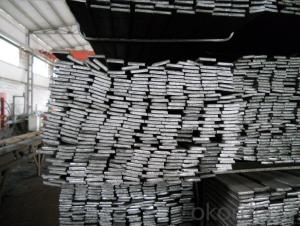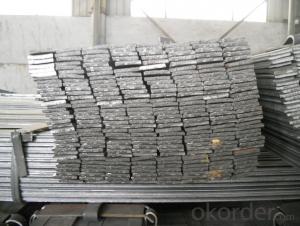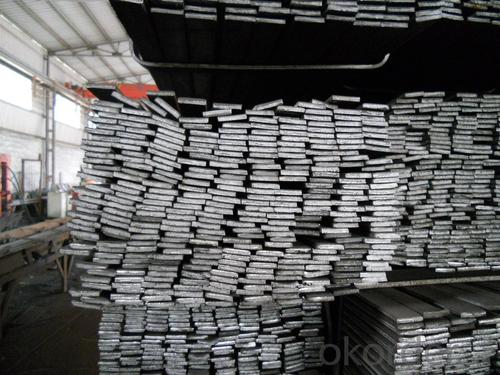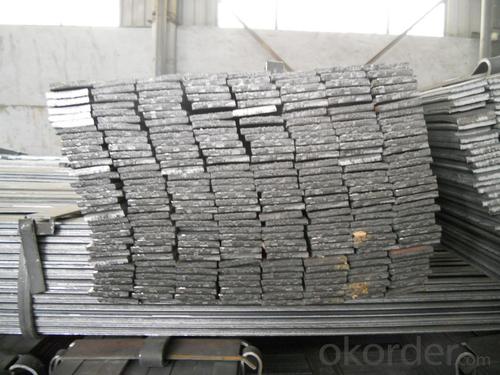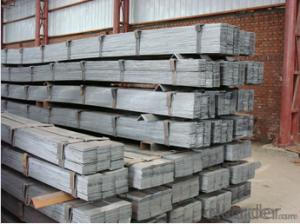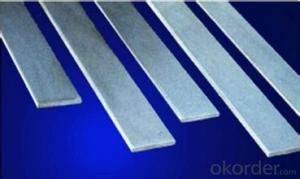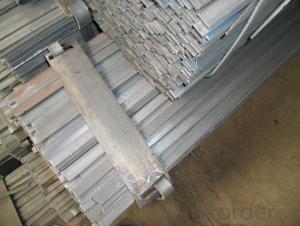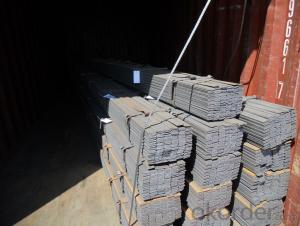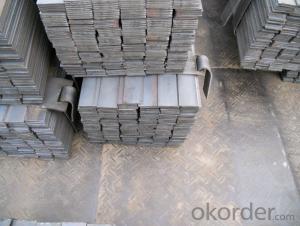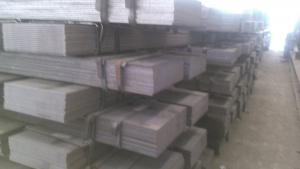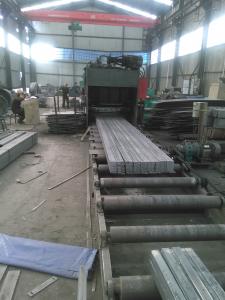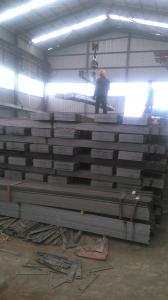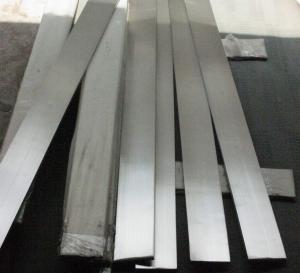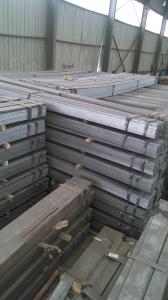GB Standard Steel Flat Bar with High Quality 60mm
- Loading Port:
- Tianjin
- Payment Terms:
- TT OR LC
- Min Order Qty:
- 25 m.t
- Supply Capability:
- 15000 m.t/month
OKorder Service Pledge
OKorder Financial Service
You Might Also Like
Product Description of GB Standard Steel Flat Bar with High Quality 60mm:
Specification of GB Standard Steel Flat Bar with High Quality 60mm:
-Standard: GB
-Material: Q235
-Length: 6m, 12m
-Size:
| Size(mm) | Mass(Kg/m) |
| 60*5 | 2.36 |
| 60*6 | 2.83 |
| 60*8 | 3.77 |
| 60*10 | 4.71 |
| 60*12 | 5.65 |
Package & Delivery of GB Standard Steel Flat Bar with High Quality 60mm:
1.The steel flat bars will be packed in bundle with steel wire at each end of every bundle and color marking in order to help the customer to recognize his goods more easily at sight.
2. And the steel flat bars could be loaded into 20ft or 40ft container, or by bulk cargo. If the weight of each bundle reaches more than 3.5 mt, the loading by break bulk cargo should be choosed. When the weight of each bundle reaches less than 3mt, the loading by container should be choosed.
3.As for the transportaion from mill to loading port, the truck will be usually used. And the maximum quantity for each truck is 40mt.
4.All in all, we could do in accordance with customer's request.
FAQ:
Q1: Why buy Materials & Equipment from OKorder.com?
A1: All products offered by OKorder.com are carefully selected from China's most reliable manufacturing enterprises. Through its ISO certifications, OKorder.com adheres to the highest standards and a commitment to supply chain safety and customer satisfaction.
Q2: How do we guarantee the quality of our products?
A2: We have established an advanced quality management system which conducts strict quality tests at every step, from raw materials to the final product. At the same time, we provide extensive follow-up service assurances as required.
Q3: How soon can we receive the product after purchase?
A3: Within three days of placing an order, we will arrange production. The shipping date is dependent upon the quatity, how many sizes you want and the plan of production, but is typically 1 month to 2 month days from the beginning of production.
Images of GB Standard Steel Flat Bar with High Quality 60mm:
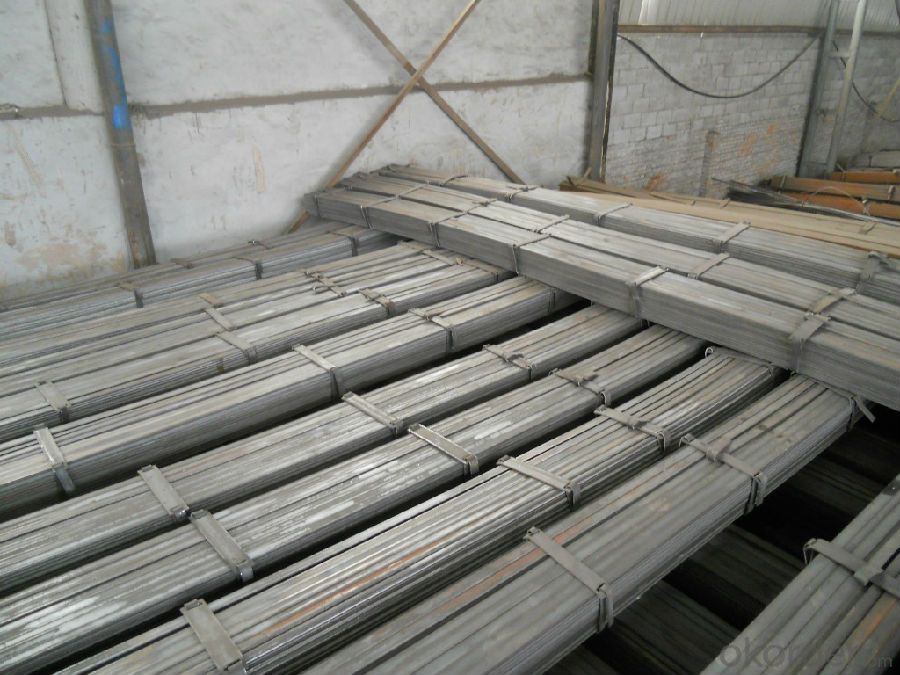

*If you would like to get our price, please inform us the size, standard/material and quantity. Thank you very much for your attention.
- Q: What are the safety precautions when handling steel flat bars?
- When handling steel flat bars, there are several safety precautions that should be taken to ensure the well-being of individuals involved. 1. Personal Protective Equipment (PPE): It is crucial to wear appropriate PPE to minimize the risk of injuries. This includes gloves, safety glasses, and steel-toed boots to protect yourself from potential cuts, eye injuries, and foot injuries. 2. Lifting Techniques: Steel flat bars can be heavy and bulky, so it is important to use proper lifting techniques to avoid strain or back injuries. Lift with your legs, not your back, and always ask for assistance if the weight is too heavy to handle alone. 3. Storage and Stacking: When storing or stacking steel flat bars, ensure they are properly secured to prevent them from falling or toppling over. Use appropriate storage racks or shelves to keep them organized and avoid any potential hazards. 4. Sharp Edges: Steel flat bars often have sharp edges, so it is essential to be cautious and handle them with care. Avoid dragging or sliding them across surfaces to prevent injuries. Additionally, rounding or deburring the edges can reduce the risk of cuts. 5. Fire Safety: Steel is highly flammable, so it is important to keep the work area clear of any flammable materials and ensure the presence of fire extinguishers. Avoid using steel flat bars near open flames or other sources of ignition. 6. Proper Training: Adequate training and familiarity with handling steel flat bars are essential for safety. Educate yourself and others on the proper techniques and precautions to follow to minimize the potential risks. 7. Regular Maintenance: Inspect the steel flat bars regularly for any signs of damage, such as cracks or corrosion. Damaged bars should be replaced to avoid potential accidents. By implementing these safety precautions, individuals can effectively reduce the risks associated with handling steel flat bars and promote a safer work environment.
- Q: How do you store and transport steel flat bars safely?
- To store and transport steel flat bars safely, there are several key steps to follow: 1. Proper stacking: When storing steel flat bars, it is important to stack them properly to prevent any damage. Ensure that the bars are stacked horizontally and evenly, with each layer aligned. The weight should be distributed evenly across the stack to maintain structural integrity. 2. Adequate support: Use sturdy supports such as appropriately sized pallets or racks to prevent any sagging or bending of the bars. Make sure that the supports are capable of handling the weight and size of the steel flat bars. 3. Securing the stack: To prevent the bars from shifting during transportation, it is necessary to secure the stack using straps or bands. These should be tightly fastened around the stack, ensuring that the bars are secure and won't move during transit. 4. Protective measures: Steel flat bars are susceptible to corrosion, especially when exposed to moisture. Therefore, it is crucial to protect them from environmental elements during storage and transportation. Consider using protective covers or wrapping the bars in moisture-resistant materials to prevent rust or damage. 5. Proper lifting and handling: When moving steel flat bars, it is important to use appropriate lifting equipment, such as forklifts or cranes, to avoid any injuries or accidents. Ensure that the lifting equipment is capable of handling the weight of the bars and that operators are well-trained in safe lifting practices. 6. Special considerations for long-distance transportation: If transporting steel flat bars over long distances, it may be necessary to use specialized shipping containers or trucks that are equipped to handle heavy loads and provide adequate protection from external elements. Overall, the key to safe storage and transportation of steel flat bars lies in proper stacking, adequate support, securing the stack, protective measures, and employing the right lifting and handling techniques. Adhering to these guidelines will help minimize the risk of damage, accidents, and corrosion, ensuring the safe delivery of steel flat bars to their destination.
- Q: Are steel flat bars heat-treatable?
- Yes, steel flat bars are heat-treatable.
- Q: How do you prevent distortion or warping on steel flat bars during machining?
- To prevent distortion or warping on steel flat bars during machining, several measures can be taken. Firstly, proper clamping techniques should be employed to securely hold the flat bars in place and minimize movement during machining. Additionally, using appropriate cutting speeds and feeds, as well as employing coolant or lubricants, can help dissipate heat and reduce the risk of warping. It is also essential to ensure that the machining process is carried out with stable and consistent cutting forces to avoid excessive stress on the material. Finally, post-machining stress-relieving treatments, such as annealing or tempering, can be applied to minimize residual stresses and further prevent distortion or warping.
- Q: How are steel flat bars measured?
- Steel flat bars are typically measured by their width and thickness. The width refers to the horizontal dimension of the bar, while the thickness refers to the vertical dimension. Both measurements are usually expressed in millimeters or inches. For example, a steel flat bar might be specified as 50 mm wide and 5 mm thick. These measurements help to determine the overall size and shape of the bar, allowing it to be accurately used in construction, manufacturing, or other applications.
- Q: What are the standard sizes of steel flat bars?
- The standard sizes of steel flat bars vary depending on the specific requirements and industry standards. However, some common sizes include widths ranging from 1/8 inch to 24 inches and thicknesses ranging from 3/16 inch to 2 inches. These sizes are commonly used in construction, manufacturing, and industrial applications. It is important to note that these sizes are not exhaustive and can vary based on the specific needs of a project or industry. It is always recommended to consult with the manufacturer or supplier to determine the exact sizes available and suitable for a particular application.
- Q: Are steel flat bars suitable for high-temperature environments?
- When it comes to high-temperature environments, steel flat bars are generally a good choice. However, the type of steel and its maximum temperature tolerance will vary depending on the specific use. For instance, stainless steel flat bars are particularly known for their excellent resistance to heat and can withstand temperatures as high as 1500°F (816°C). They also have good mechanical properties, which means they can maintain their strength and shape even when exposed to high temperatures. Nevertheless, it is important to consider the unique requirements of each high-temperature environment. Factors such as the duration of exposure to high temperatures, the presence of corrosive substances, and the potential for thermal expansion or contraction must be taken into account. In some extreme situations, such as in furnaces, specialized high-temperature alloys or refractory metals may be more suitable. To ensure the best performance in a specific high-temperature application, it is always recommended to seek the advice of a materials engineer or specialist. They can assess the specific requirements and offer guidance on the most appropriate steel grade, heat treatment, and any additional protective measures that may be necessary.
- Q: Can steel flat bars be used for reinforcing concrete structures?
- Yes, steel flat bars can be used for reinforcing concrete structures. They provide additional strength and support to the concrete, enhancing its structural integrity and resistance to tension forces. Flat bars are commonly used as reinforcement in beams, columns, slabs, and other concrete elements to prevent cracking and increase overall durability.
- Q: Can steel flat bars be used for structural purposes?
- Yes, steel flat bars can be used for structural purposes. They are commonly used in construction projects for various applications such as support beams, braces, and framework due to their strength and durability.
- Q: Can steel flat bars be used for making brackets or supports for medical equipment?
- Steel flat bars are indeed suitable for creating brackets or supports for medical equipment. The reason is that steel is a robust and long-lasting material capable of offering the required stability and support necessary for medical equipment. Moreover, it possesses exceptional load-bearing capabilities and can endure substantial pressure or weight. Additionally, steel exhibits resistance to corrosion, a vital trait for medical equipment that may encounter moisture or other potentially harmful substances. In summary, due to their strength, durability, and corrosion resistance, steel flat bars are an appropriate option for fabricating brackets or supports for medical equipment.
Send your message to us
GB Standard Steel Flat Bar with High Quality 60mm
- Loading Port:
- Tianjin
- Payment Terms:
- TT OR LC
- Min Order Qty:
- 25 m.t
- Supply Capability:
- 15000 m.t/month
OKorder Service Pledge
OKorder Financial Service
Similar products
Hot products
Hot Searches
Related keywords
